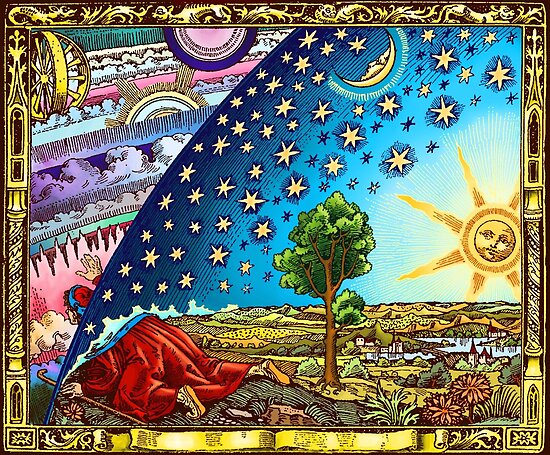Page 1 of 1
APOD: Night Sky Highlights: March to May (2018 Mar 14)
Posted: Wed Mar 14, 2018 4:11 am
by APOD Robot
 Night Sky Highlights: March to May
Explanation: What might you see
Night Sky Highlights: March to May
Explanation: What might you see in the night sky over the next few months? The featured graphic gives a few highlights. Viewed as a
clock face centered at the bottom, sky events in March fan out toward the left, April toward the top, and May toward the right. Objects relatively close to
Earth are illustrated, in general, as nearer to the cartoon figure with the telescope at the bottom center -- although
almost everything pictured can be seen without a telescope.
Sky highlights this season include a
bright Venus in the evening sky during March, the
Lyrids meteor shower during April, and
Jupiter entering the evening sky during May. As true in every season, the
International Space Station (
ISS) can be
sometimes be found drifting across your sky if you know just when and where to look.
Re: APOD: Night Sky Highlights: March to May (2018 Mar 14)
Posted: Wed Mar 14, 2018 9:01 am
by heehaw
Reminds me of what I get every month in the mail from Sky & Telescope!
http://www.skyandtelescope.com When I got my PhD in astronomy I thought I wouldn't need S&T any more. Boy was I wrong!
Re: APOD: Night Sky Highlights: March to May (2018 Mar 14)
Posted: Wed Mar 14, 2018 1:22 pm
by will.yon
Here's a great resource for alerts when the ISS will be flying over your area:
https://spotthestation.nasa.gov/signup.cfm
Re: APOD: Night Sky Highlights: March to May (2018 Mar 14)
Posted: Wed Mar 14, 2018 1:52 pm
by neufer
Re: APOD: Night Sky Highlights: March to May (2018 Mar 14)
Posted: Wed Mar 14, 2018 9:20 pm
by Sa Ji Yario
I want this entry to be a reminder and tribute to who has left and left us a way open for a growing science (RIP S. H.)
Re: APOD: Night Sky Highlights: March to May (2018 Mar 14)
Posted: Thu Mar 15, 2018 3:39 am
by MarkBour
Sa Ji Yario wrote: ↑Wed Mar 14, 2018 9:20 pm
I want this entry to be a reminder and tribute to who has left and left us a way open for a growing science (RIP S. H.)
Amen. I hope it is not disrespectful, but in a way, the famous image that Art Neuendorffer posted just above, reminds me of Stephen Hawking.
 Night Sky Highlights: March to May
Night Sky Highlights: March to May